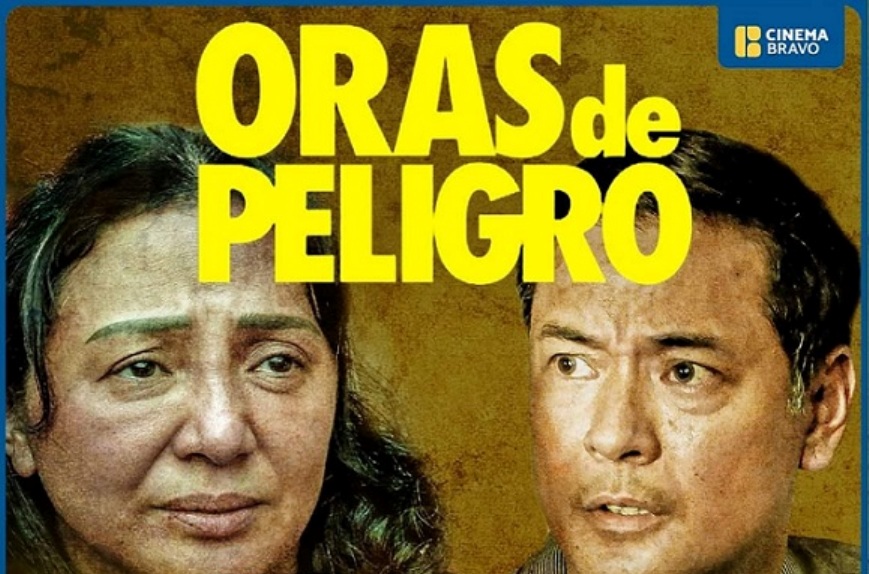Like red ink spilling
For Ericson Acosta
By Rebecca K. Lawson
Like red ink spilling
from a leaking pen,
an indelible stain spreads
onto the war-torn tapestry
of this nation.
We brace ourselves
for the price of struggle
and the pain of loss.
The gentle
offer themselves
in hopes for better tomorrows
for those poor and oppressed.
Their feet pound mountain heights
even as their pens scribble
our collective dreams for social justice
and tangibles for meaningful reforms
that will benefit the toiling majority.
And when a nimble pen
and brilliant heart
is felled by a fascist evil,
the earth shakes.
We are awakened once more
that peacebuilding
is an urgent task, for tyranny, militarism,
and cold-blooded violations
of human rights
and international humanitarian law
must not be allowed
to have the last word.
We go on!
-30 November 2022
Narinig niyo na ba?
Ni Ibarra Banaag
Narinig niyo na ba,
Ang kanyang mga tula
at kanta?
Nahulaan niyo na ba,
Saan hinango ang linya
at himig nito?
Naramdaman niyo ba,
ang lalim at talas
ng pahimakas?
Nabasa niyo na ba,
mga akdang pawang
makamasa?
Nataros niyo na ba,
makauring himaymay
ng bawat tudla?
Namulat ka na ba,
sa taglay na linyang masa at paksa?
Kasama bang nasawi,
ang talastas niyang
walang kupas?
Ang kanyang mga likha,
ng kanyang pagsanib sa aba,
Mula sa landas,
na bibihira ang bumabagtas.
Makamit lamang, isang buhay na may dangal.
Ang pangalan niya,
ay Ericson Acosta,
Kadre,
makata,
mandirigma.
-30 November 2022
DEATH IN THE MORNING
By Pablo Tariman
One more time
You rewind another life
Gone at fifty
With just his poems
For his only son to peruse
As last mementoes.
No more time to grieve
The container of sadness is dry
From previous year’s constant grief
You have rehearsed this before
Going to a roomful of dead people
And identifying your loved one
And then you bring him
To nearest crematorium
To later settle in an urn
Of memories.
There is no time
For bitterness
Or rancor.
They have chosen
Another way to live
And reach their ideal
Fighting
For the hungry
And the oppressed
And constantly coping
With well-funded
Lackeys of war.
A day before his death
He was talking about
Seeing a doctor
For his recurring ailment.
Alas
He didn’t make it
To his doctor’s appointment.
From what I heard
He was arrested alive
And later riddled with bullets
Typical of dogs of war.
His son expected
To see his father
In detention
For a last hug and embrace.
But early morning
Of a fateful Thursday
He is gone.
Like the way he saw
His mother for the last time
Lifeless on a cold stretcher
In a morgue
In the shadow of Mt. Silay.
I can only rewind
Fifty years of his life
And forty two years
Of my daughter’s life.
Am figuring out his grave:
Should I bury him
Beside my daughter’s crypt
Or beside his father’s tomb
In another town?
I am airport-bound
Once more
For last appointment
With the departed.
I have come to terms
With this life
As I have lived it.
Happy my loved ones
Have come to terms
With dying
The brave way
Mula kay Ericson, Para kay Ericson
Ni Kislap Alitaptap
Ito ang pagsanib ng kaba
Sa lupang magaspang
At pagsiyasat sa kaluskusan ng mga dahon
Ito ang marahang tapik sa balikat
Ang tingin na may pagtitiyak
Ito ang buntong-hininga
Habang nasa likod ang araw ng umaga
Isang minutong katahimikan
Ngayon na ang katuparan
Ang bugso ng balaraw
Ang paglikha ng balang-araw.
-30 November 2022
Death of a poet
Ni Xian Patricio
tila tubig na dumadaloy
ang mga tulang ibinuhos
ng inyong pawis at luha.
Nag-iiwan ng bakas,
at umuukit sa lupa
upang hanapin ang kaniyang landas.
Mananatili sa isang panahon
para bumuo ng lawa,
hanggang humukay nang malalim
at magbuo ng mundong may búhay.
Ngunit minsang umapaw,
kasabay ng mga nauna pang pag-agos,
mahahagilap din niya ang sarili
sa mga patubig ng sakahan,
sa tubig inumin,
sa mga esterong nanlilimahid,
hanggang sa dumaop ang mga salita
sa karagatan, at yayakapin
ng libu-libong isdang nabubuhay,
at maipapasa ang mga tula
sa susunod pang laksa
habang mayroon pang umaagos
sa batis.
mamatay man ang bukal
ng tubig ng inyong mga salita,
nakapagpabuhay na ito,
at sila na ang bahalang magpadaloy.
Limasingko
Ni Khavn dela Cruz
limasingko limasingko limasingko limasingko limasingko
limasingko ang buhay sa bayan ko
dito magtungo para pasabugin ang bungo
para wasakin ang puso
limasin ang dugo
umaasa ang berdugo
na sa pagkalabit ng gatilyo
maglalaho ang mga kataga at konsepto
bawal magsalita
huwag magsabi ng totoo
tumahimik
manahimik
mag-ingay
huwag magpalamon sa bangungot na bumabalot
sa araw-araw na humihiyaw
tungkol sa katiwalian, karahasan, katangahan
ano nga ba ang napapala ng mamamatay-tao?
buhay na walang-hanggan?
trabaho lang?
bakit sila kailangang puksain
parang ipis at daga ang turing?
percy lapid
kerima tariman
eman lacaba
at marami pang iba
bakit napakarami nila sa munting bayan ko?
ngayong araw, pinanganak si bonifacio
ngayong araw, pinatay si ericson acosta
mabuhay ang pilipinas nating wazak!
Hindi magagapi
Ni Arnold Padilla
Kunin man nila ang ating mga ina at ama
di magiging ulila ang ating mga anak
sa tahanang ilaw ang pakikibaka
haliging matatag ang kilusan ng masa.
Kunin man nila ang ating mga makata
di pupurol ang talas ng ating dila
ang diwang hinasa ng kanilang taludtod
tabak na papatid sa kaisipang iginapos.
Kunin man nila ang ating mga mandirigma
di hihinahon ang apoy ng gera sa nayon
sa lupang kinamkam ng mga diyos-diyosan
titindig ang mga bagong kawal ng bayan.
-December 1, 2022
Hindi Ko Kilala
Ni Aida CF Santos
Hindi ko kilala si Ericson Acosta
o ang kanyang asawa na si Kerima
ilang dekada ang pagitan
ng aming henerasyon
ngunit hindi naiiba
ang mga layunin ng pag-aalsa
o pagsulat ng mga tula at awit
ng kuyom na mga kamao
mahigpit ang tangan sa paniniwalang may bukas
na maaliwalas ang pamana nila sa anak na si Emman at libong tulad niya
Binabasa ko ang kanilang maiikling talambuhay
ang mga tulang hindi na nila mabibigkas o maririnig nilang bibigkasin ng mga kaibigan
at kasama, ng masa
na humanga sa kanilang kabayanihan
iginupo ng mga bala at itak
ng mga traydor sa bayan
Kinilala ko sila
at ang pusod ng puso ng
pakikidigma
ang pulso na may tibok
ng paniniwala
taos ang panghihinayang
taos ang galit sa dibdib
taos ang tulo ng mga luha
taos ang pagsaludo
sa apoy na magdadala muli
sa mga abo na pinagmulan
ilang Ericson at Kerima pa
ilang henerasyon pa
– 6 Disyembre 2022
Moving On
By Pablo Tariman
We are done
With grieving
And wiping away
Persistent grief
Like my grandson
Who let it all fall
Where it should
On a street corner
Where his parents used to tread
Along the hollowed street of Mendiola
What were those tears for?
He expected to reunite
With dear father
In a detention cell
And perhaps strum
Their guitars together
For the last time
The next thing he knew
His father was arrested
In the hinterlands of Kabankalan
Then made to do a few turns
With his companion
Only to meet their imminent death
In a sudden rain of bullets
And bolos tearing away
At their skin
Months back
I always request
Massenet’s Meditation
To remember
My late daughter
Now it is time
For that soulful music
To remember his father
I always ask my grandson
To seat with me in rehearsals
While Massenet’s Meditation
Floats eerily
In the auditorium
Surely
Music has a way with grief
Perhaps it is a good way
To confront death
Perhaps the gentle way?
I don’t know
How my grandson feels
Letting the music
Come to his psyche
With yet another death
In the family
Now tell me
How should music metamorphose
Into balm
For our weary spirit?
Perhaps music
Can guide us
Into the periphery of acceptance
Even if the labyrinth
Is oozing
With excruciating pain
It is quiet and humid
In that angry street
With ominous graffiti
Shouting justice
For my grandson’s father
I did carry that urn
With his mother a year ago
Now I am torn with grief
Seeing him
Carrying his father’s ashes.
Is it
Time to move on
And fly on the wings
Of song
And remembrance?
–7 December 2022
* * *
Negros Redux
By Pablo Tariman
It is suddenly quiet
And eerie in my garden
I figure out my potted trees
Tall and almost reaching out
To lampposts
On this deserted street
Where I live
I look for
My share of solace
In the garden
As grandson
Finally came home
After seven days
Of travelling
From Manila to Silay
And Bacolod
And on to a barrio
In Kabankalan
We have questions
In our mind:
Why did they embalm body
Without knowledge
Of family
And without death certificate?
We decided not to be too nosy
About legal procedures;
In this part of the country
It is dangerous
To ask too many questions
The funeral parlor
Is teeming with
Men in uniform
Moving about
And looking scary
While sniffing visitors
Like trained police dogs
The funeral parlor owner
Is a character straight
From Hitchcock horror films
He is Christian pastor
On special days
And traffic officer by day
At night he is funeral parlor owner
And taking notes
Of the dead coming in
For embalming
Some corpses
Are special
As they are
Heavily escorted by
Police and military
In the dead of night
We figure out:
Do military men
And funeral parlor owners
Run big business
Out of victims
Of vicious killings?
Meanwhile
My grandson’s father
Is reduced
To an airline cargo
After getting assorted permits
From barangay demigods
To city hall executives
And health officers
And final permit to transport body
From Bacolod to Manila
Back in the city
We cremate the body
And given proper
Religious ritual
For the dead
From the funeral parlor
After cremation
And on to this final wake
Grandson has to be present
To deliver his final tribute
To his late father
It has occurred to me:
Is this how poets die
In this country
Ravaged by storms
And earthquakes
And constantly
Reeling from scams
As police officers
And assorted public servants
Are caught with their dirty
Fingers in the proverbial
Cookie jar of corruption
They kill poets and cultural workers
And torture the families
With assorted permits
Before they could see
Bodies of their loved ones
Contrast this with thieves
And serial killers
Given heroes’ funeral
Negros
Is a lesson on living
And surviving
And coming to terms
With sad realities
In this benighted land
I open my grandson’s room
And see a tired and solitary figure
Finally deep in slumber
After another sad chapter
In his young life
-8 December 2022



